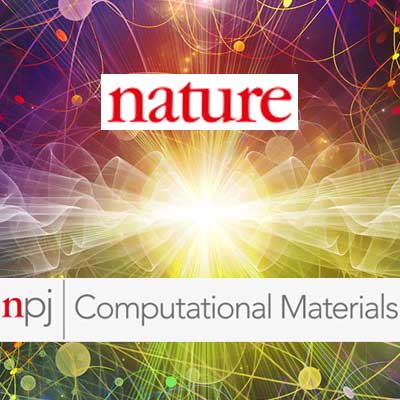对“机器学习增强的纹理表示EBSD数据分析”的评论
IF 9.4
1区 材料科学
Q1 CHEMISTRY, PHYSICAL
引用次数: 0
摘要
本评论是对Wanni, J., Bronkhors, C. A. &;托马斯,d.j. npj计算机。材料,10,133 (2024),https://doi.org/10.1038/s41524-024-01324-4。作者对纹理表示方法的概念证明和验证存在严重的缺陷,其应用可能导致错误的结论。本文章由计算机程序翻译,如有差异,请以英文原文为准。

Comment on “Machine learning enhanced analysis of EBSD data for texture representation”
This comment is on “Machine learning enhanced analysis of EBSD data for texture representation” by Wanni, J., Bronkhors, C. A. & Thoma, D. J. npj Comput. Mater. 10, 133 (2024), https://doi.org/10.1038/s41524-024-01324-4 . The authors’ proof of concept and validation of their approach to texture representation are severely corrupted, its application may lead to false conclusions.
求助全文
通过发布文献求助,成功后即可免费获取论文全文。
去求助
来源期刊

npj Computational Materials
Mathematics-Modeling and Simulation
CiteScore
15.30
自引率
5.20%
发文量
229
审稿时长
6 weeks
期刊介绍:
npj Computational Materials is a high-quality open access journal from Nature Research that publishes research papers applying computational approaches for the design of new materials and enhancing our understanding of existing ones. The journal also welcomes papers on new computational techniques and the refinement of current approaches that support these aims, as well as experimental papers that complement computational findings.
Some key features of npj Computational Materials include a 2-year impact factor of 12.241 (2021), article downloads of 1,138,590 (2021), and a fast turnaround time of 11 days from submission to the first editorial decision. The journal is indexed in various databases and services, including Chemical Abstracts Service (ACS), Astrophysics Data System (ADS), Current Contents/Physical, Chemical and Earth Sciences, Journal Citation Reports/Science Edition, SCOPUS, EI Compendex, INSPEC, Google Scholar, SCImago, DOAJ, CNKI, and Science Citation Index Expanded (SCIE), among others.
 求助内容:
求助内容: 应助结果提醒方式:
应助结果提醒方式:


